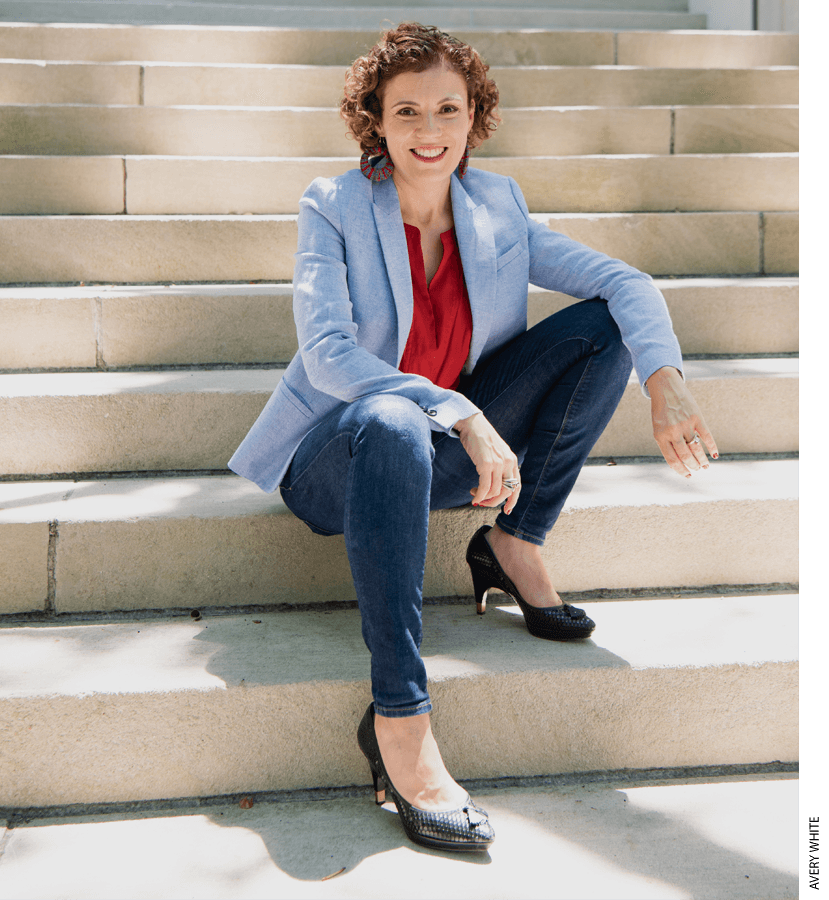
God, Grades, and Graduation: Religion’s Surprising Impact on Academic Success
by Ilana M. Horwitz
Oxford University Press, 2022, $26.44; 254 pages.
As reviewed by David E. Campbell
Why do some young people thrive in school while others flounder? In her new book God, Grades, and Graduation: Religion’s Surprising Impact on Academic Success, Ilana Horwitz points to religion as one answer. Unlike previous studies, though, Horwitz is not examining whether a school is religious but whether the students are. For all the debate over the role of religion in the schools, Horwitz instead turns her attention to how religious belief and behavior outside of school can affect the success of students in school. Specifically, she draws on a wealth of data to make the case that working-class kids in particular are more likely to finish high school and attend college if they are “abiders”—that is, if they have strong religious beliefs and an active role in a religious community.
One mechanism behind religion’s educational impact on young people seems to be that a belief in God—particularly a God who actively intervenes in one’s life—can be a strong motivator to stay out of trouble. Another is reminiscent of James Coleman’s seminal work on education and community. Religious teens benefit from a supportive group of peers and adults who serve as “guardrails” to keep them on the path toward graduation, college, and gainful employment. In other words, they have social capital, which means they are in a personal network in which they learn social norms. Often, these norms include “middle-class” mores typically rewarded in the education system. Horwitz, a sociologist of religion and education who teaches at Tulane, argues that the Protestant DNA of America’s public-school system has left a legacy of three Rs: rules, routines, and regulations. “Abiders do well not because they are smarter or more capable. They get better grades because they are better at following the rules.” She calls this “religious restraint.” The effect of religious restraint even holds when controlling for the “usual suspects” known to affect educational attainment, including socioeconomic status, family structure, and gender. In fact, religion benefits boys the most.
Horowitz also demonstrates that religion’s impact on educational outcomes is most pronounced for working-class teens. As Robert Putnam has documented in Our Kids: The American Dream in Crisis, most working-class kids do not have the same social capital available to those from professional-class families. But abiders do, as they have a network of peers and elders who serve as “airbags,” ready to activate in case of emergency. In this sense, religion restrains young people by keeping them on the straight and narrow path.
For adolescents who live in poverty, Horwitz shows that religion has little impact on educational outcomes, as they face too many other obstacles to academic success. It is a sobering indictment of the American Dream that even God cannot overcome the barriers imposed by economic inequality.
As for abiders whose parents are in the professional class, they, too, experience religious restraint, but in a different way. While religion propels working-class kids to greater educational achievement than they would otherwise reach, it serves to restrain professional-class teens from enrolling in the most-selective colleges. Instead of applying to elite schools, they are more likely to attend less-prestigious colleges close to home, which in turn leads to lower lifetime earnings. To an economist, such “undermatching” may be a negative consequence, but that is not how these young people see it. According to Horwitz, they are perfectly happy with their path in life, as they have given priority to God over mammon.

Given the rising tide of secularization in America, one might wonder if Horwitz is documenting a dying trend, like writing a book about the internal-combustion engine just as electric cars take off. Yet while the growth of secularism is a significant trend, religious Americans are in no danger of extinction. In fact, the turn away from religion has primarily been among moderately religious people not tightly enmeshed in a faith community, who—Horwitz shows—do not receive the benefits of religion that accrue to the more deeply committed. While growing, this group is currently about one in five Americans, roughly half the size of the highly religious population.
Horwitz does, however, identify another group of teens who succeed in school, not by doing what they are told, but by finding their own way. In a fascinating denouement, Horwitz contrasts abiders with atheists—a small but growing group. They, too, have an education advantage, but for a very different reason. It is not that they have learned the hidden curriculum of middle-class norms through a network of strong ties. Instead, they are self-directed, to the extent that they are often willing to defy those norms and forge a new path. Unlike abiders, when atheists apply to college, they aim for the most-selective schools, putting a priority on experiencing something new over the familiar. (There are relatively few atheists in Horwitz’s study sample, though, and she qualifies her conclusions accordingly.)
There is a potential negative consequence of a tightknit religious community that goes unmentioned in this book. The very same rule-following conformity that leads to a high-school diploma and college enrollment can also cause distress to those young people who do not conform to their religious community’s norms. LGBTQ teens, in particular, often struggle in a religious context. It is difficult to perform well in school if you are struggling to maintain your mental health. Nor are the challenges of LGBTQ youth the only potential negative consequence of faith-based conformity.
To be clear, Horwitz acknowledges the potential pitfalls of an education system that rewards rule following over independent thinking. As this important book is discussed and debated, commenters should remember that, while religion results in an education advantage for working-class teens, it is a particular kind of education that is well-suited for some occupations but not for others. Rule followers may thrive as Amazon drivers but are unlikely to come up with the idea for the next Amazon. It is also a kind of education that may be better at instilling rule following than at inspiring civil disobedience—or at teaching the critical thinking needed to determine when each is warranted, a skill crucial to sustaining a republican form of self-government.
This is a persuasive book, but I would have found it even more so if Horwitz had done more to “show her work.” Most of the book’s conclusions are supported with anecdotes and case studies. Few of the underlying quantitative data are presented, and, when they are, we are often left to trust the author’s judgment about what constitutes a large or meaningful effect. Again and again, I found myself wanting to see the evidence to judge for myself. I recognize that data can be an acquired taste, and not all readers will be interested in the details. But Horwitz’s fellow social scientists are all about the details. It is possible for books of social science to be both empirically persuasive and generally accessible, though examples of such crossbreeds are all too rare.
This quibble aside, Ilana Horwitz has produced a compelling, provocative study, which I hope will inspire still more work on the same subject. Much heat is generated by the debate over the role of religion in young people’s schools. God, Grades, and Graduation demonstrates the light that can come from studying the role of religion (or the lack thereof) in their lives.
David E. Campbell is the Packey J. Dee Professor of American Democracy at the University of Notre Dame.
This article appeared in the Fall 2022 issue of Education Next. Suggested citation format:
Campbell, D.E. (2022). The Perks of Faith: How religious belief and behavior help students thrive in school. Education Next, 22(4), 78-79.


